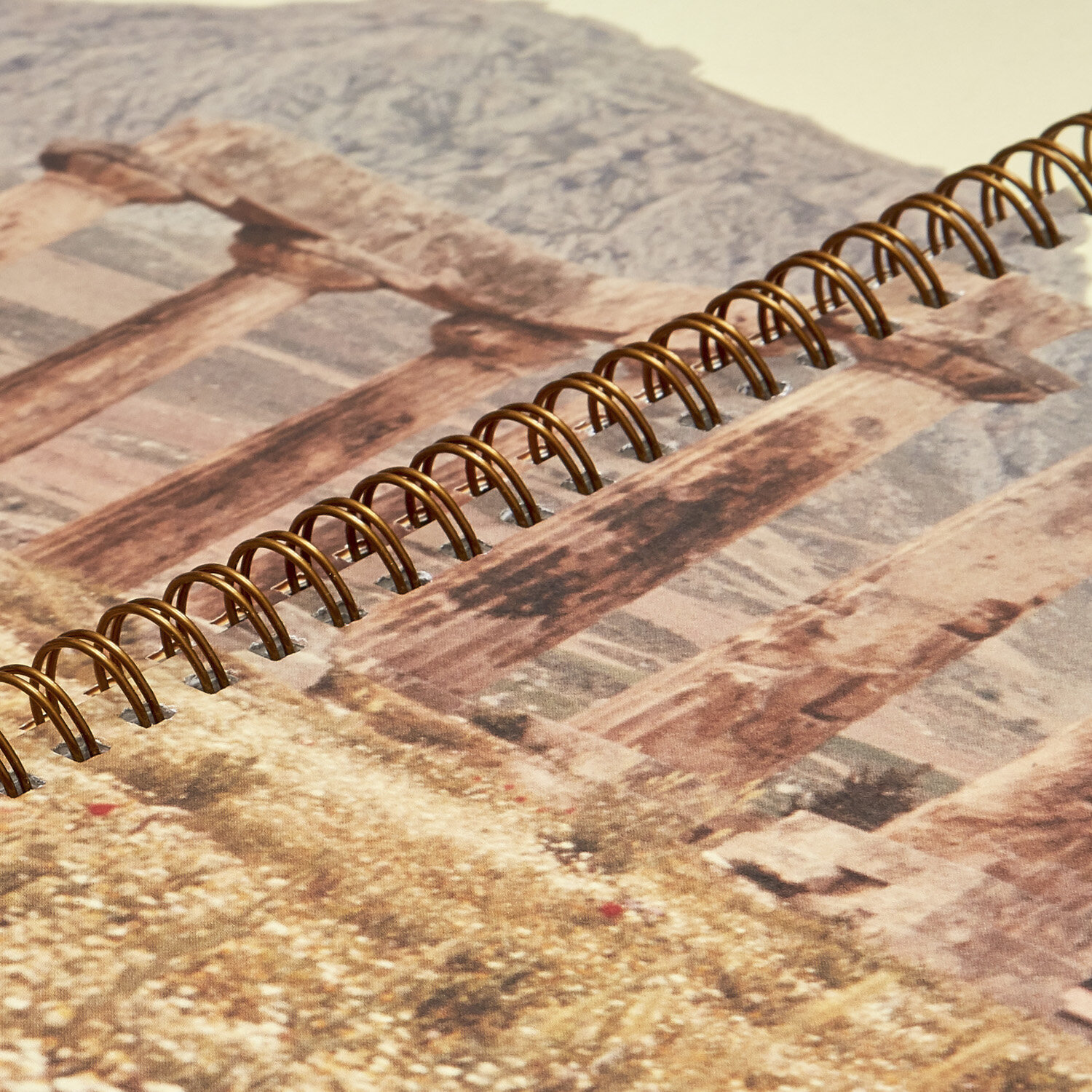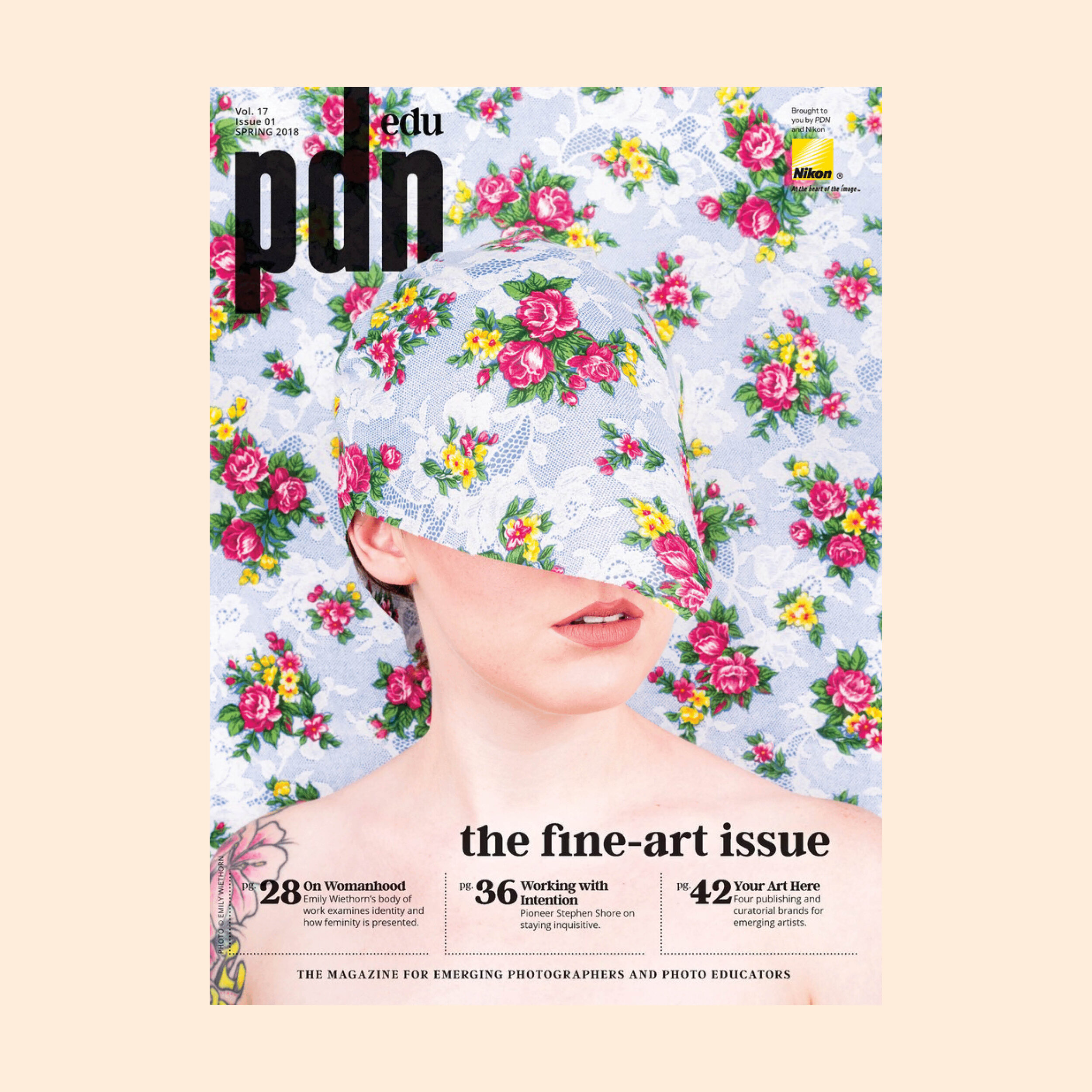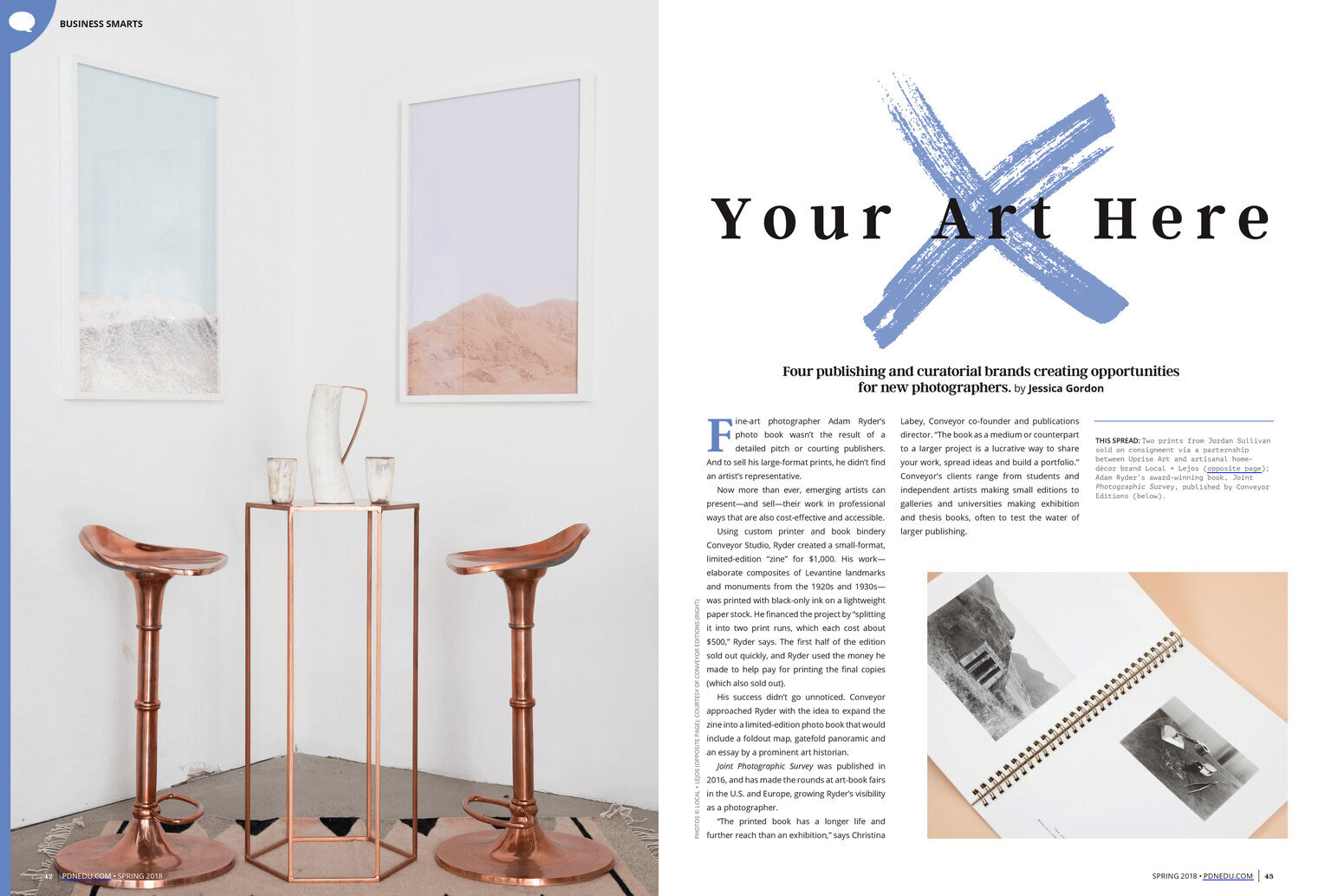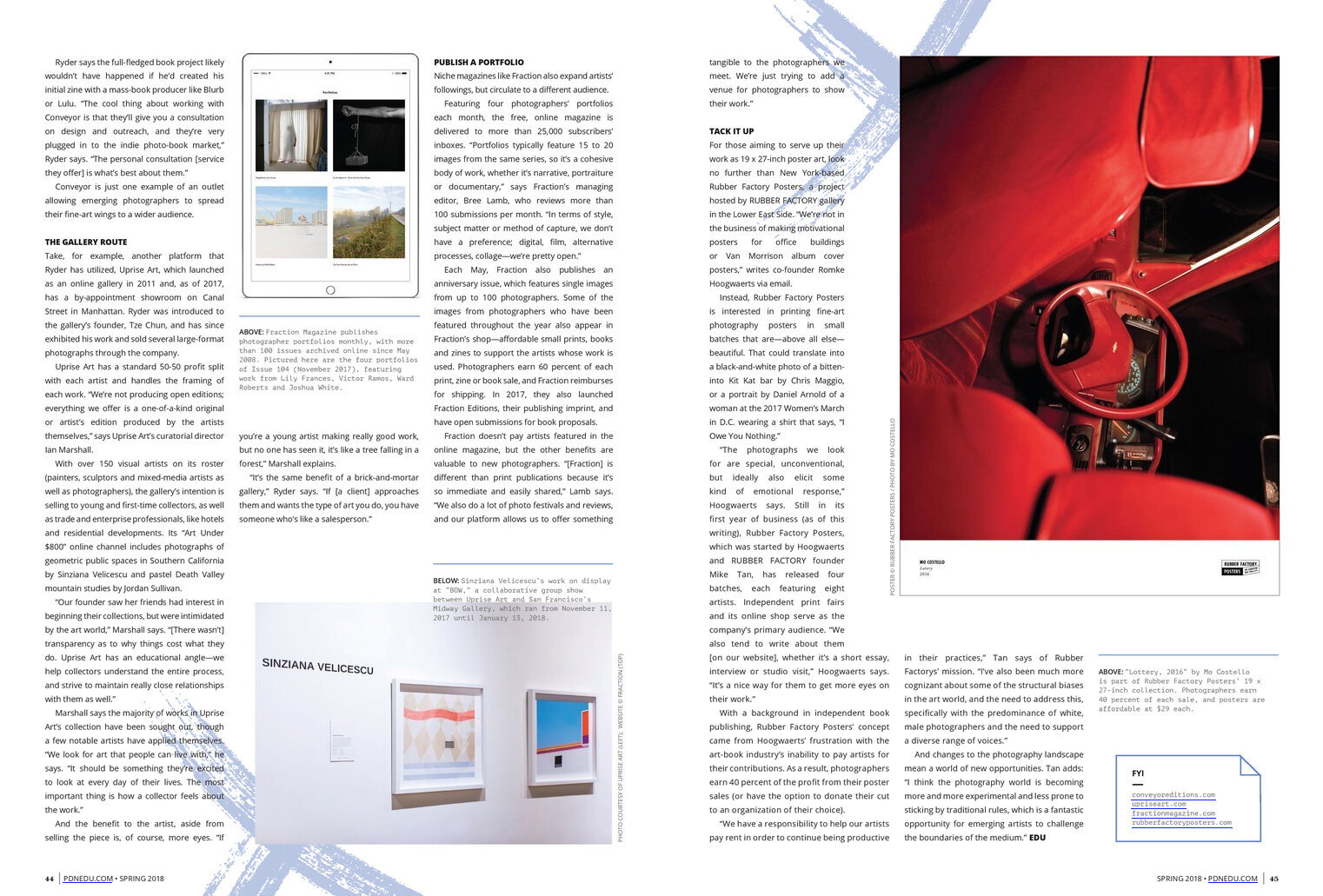Your Art Here
Feature by Jessica Gordon
PDNedu, Spring 2018
The printed book has a longer life and further reach than an exhibition...the book as a medium or counterpart to a larger project is a lucrative way to share your work, spread ideas and build a portfolio.
—Christina Labey, Publications Director
↑ Detail from Joint Photographic Survey (Conveyor Editions, 2016)
Fine-art photographer Adam Ryder’s photo book wasn’t the result of a detailed pitch or courting publishers. And to sell his large-format prints, he didn’t find an artist’s representative.
Now more than ever, emerging artists can present—and sell—their work in professional ways that are also cost-effective and accessible.
Using custom printer and book bindery Conveyor Studio, Ryder created a small-format, limited-edition “zine” for $1,000. His work (elaborate composites of Levantine landmarks and monuments from the 1920s and 1930s) was printed with black-only ink on a lightweight paper stock. He financed the project by “splitting it into two print runs, which each cost about $500,” Ryder says. The first half of the edition sold out quickly, and Ryder used the money he made to help pay for printing the final copies.
His success didn’t go unnoticed. Conveyor approached Ryder with the idea to expand the zine into a limited-edition photo book that would include a foldout map, gatefold panoramic and an essay by a prominent art historian.
Joint Photographic Survey was published in 2016, and has made the rounds at art-book fairs in the U.S. and Europe, growing Ryder’s visibility as a photographer. "The printed book has a longer life and further reach than an exhibition,” says Christina Labey, Conveyor co-founder and publications director. “The book as a medium or counterpart to a larger project is a lucrative way to share your work, spread ideas and build a portfolio.” Conveyor’s clients range from students and independent artists making small editions to galleries and universities making exhibition and thesis books, often to test the water of larger publishing.
Ryder says the full-fledged book project likely wouldn’t have happened if he’d created his initial zine with a mass-book producer like Blurb or Lulu. “The cool thing about working with Conveyor is that they’ll give you a consultation on design and outreach, and they’re very plugged in to the indie photo-book market,” Ryder says. “The project consultation [service they offer] is what’s best about them.”
Conveyor is just one example of an outlet allowing emerging photographers to spread their fine-art wings to a wider audience.
↑ Detail from Joint Photographic Survey (Self Published, 2012)
Tearsheets &
Publication Photographs
↓
Photo Credit: Conveyor Studio / Tearsheets from PDNedu





